Michigan vegetable crop report - May 11, 2022
Early season innovations, frustrations and warmer weather ahead.

Weather
Watch Jeff Andresen’s weather update.
Our current summer weather, featuring 20 degrees Fahrenheit above normal temperatures, is due to a large upper air ridge in the jetstream. The rapid changes in weather are due to the amplified (roller coaster vs gentle hill) jetstream, as the ridge shifts east or west weather changes. Evapotranspiration rates are 0.2 inches or higher, very high for May; where there is sun the ground will dry out fast. Degree day totals are still slightly behind normal, but will continue to catch up over the next week.
The forecast calls for:
- A variably cloudy and warm Wednesday. Scattered showers and thunderstorms possible west and north. Dry elsewhere.
- Partly cloudy, very warm and humid weather Thursday and Friday.
- Showers and thunderstorms possible Saturday and Sunday. Turning cooler Sunday.
- Much above normal temperatures with highs in the 70s and 80s to near 90 falling back to the 70s north - 80s south through Saturday. Lows generally in the 50s north – 60s south through Saturday. Temperatures falling back to highs in the 50s north - 60s south with lows in the 40s by early next week.
- Medium range guidance calls for a return of normal to below normal temperatures next week.
Greenhouse management
Michigan State University’s Dave Smitely and Mary Hausbeck have updated their greenhouse insect and disease management recommendations for the 2022 greenhouse season. Pay special attention to individual labels as they relate to vegetables and herbs. The crop’s end-use influences labeling.
Temperature management will be key this week for popular hoophouse vegetables like leafy greens and tomatoes.
Cover cropping in the heat of spring
Finding time to plant cover crops this time of year is easier said than done, but well worth considering if you have some open fields and can focus on a few key principles.
A very wide range of cover crops and mixes can be sown in the next few weeks, each with their own unique costs and benefits (see Midwest Cover Crops Council). Key considerations include thinking through your management goals, avoiding cover crops that are in the same botanical family as any of your planned cash crops (no radishes before cabbage!), and considering when your next crop will be planted (how big a window are you trying to fill?). The options can be overwhelming, but if in doubt and in a hurry (likely this time of year) it is safest to go with a grass species like oats for short windows or sorghum-sudangrass for longer windows. These species are unlikely to host diseases and insects of broadleaf vegetable crops and are relatively inexpensive and reliable.
Another good option for short windows beginning in mid-May is buckwheat, which has few vegetable relatives (only rhubarb), is usually fast to establish and suppress weeds, and is relatively easy to kill and plant into later in the season. Buckwheat planted now will begin flowering in about 40 days (early July) and produce viable seeds shortly thereafter. If mowed and disked before seed set, buckwheat can provide excellent tilth with minimal field prep before fall crops such as broccoli.
Although it is tempting to just throw cover crop seeds into a field and hope for the best during this busy time, it is worth paying attention to a few key practices: If any weeds have begun germinating (very likely with this week’s high temperatures) be sure to kill them as close to your planting time as possible. Even a small headstart for weeds will likely result in escapes that will produce weed seeds that may haunt your future. Likewise, sowing at high rates, especially if broadcasting seeds, is important for weed suppression. For sorghum sudangrass or buckwheat, this means 50 pounds per/acre or more. Providing adequate fertility can also be important to maximize benefits of cover crops, especially on sandy soils. Consider applying 30-60 pounds of nitrogen per acre in some form at planting for non-legume covers.
Crop updates
Asparagus
Things are moving fast with the summer-like weather. As of Monday, scattered spears were up in most Oceana County fields. By Tuesday afternoon, some growers were “evening out” fields by taking the spotty first picking and picking fields planted in 2021. Full-scale harvest was expected to ramp up this Thursday and Friday in Oceana and Mason County. Regular picking for fresh market sale had already begun in Bay County.
With temperatures expected to reach the low 80s in the next few days and no rain in the forecast, growers with the option to irrigate could consider doing so. Keeping the soil surface moist during hot dry conditions can reduce risk of sand blasting and slow spear growth to help harvest crews keep pace and maintain spear tip quality. An irrigation study on sandy soils demonstrated reductions in open spear tips under hot dry conditions.
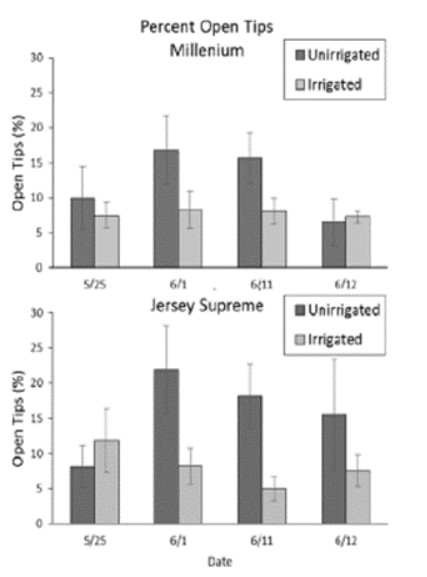
Thankfully, the faster spears grow, the less danger there is of injury from white cutworm. Risk will also decline as stubble builds up, as caterpillars are just as likely to get full on stubble as on asparagus. Hopefully there will not be major issues.
Keep an eye out for asparagus beetle. It overwinters as an adult, which means it’s ready to go once temperatures warm. This could happen quickly this year with the heat. Products with one-day PHIs include formulations of carbaryl, acetamiprid (e.g., Assail) and methomyl (e.g., Lannate). Permethrin also has a one-day PHI, but is probably best reserved for cutworms; beetle numbers were not significantly different from untreated plots in a 2020 Michigan State University trial.
Carrots and celery
Planting of dicing varieties was wrapping up this week in west central Michigan, with some emergence of early plantings. Celery transplanting is ongoing as growers move backed-up transplants out to the field to stretch their roots.
Cole crops
Cabbage maggot activity should be kicking in based on degree days, with flies starting to emerge and lay eggs.
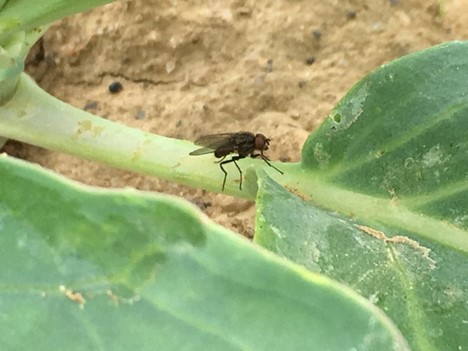
Michigan State University Extension has scouted some fields, and did find a likely cabbage maggot egg at an Allegan County location.
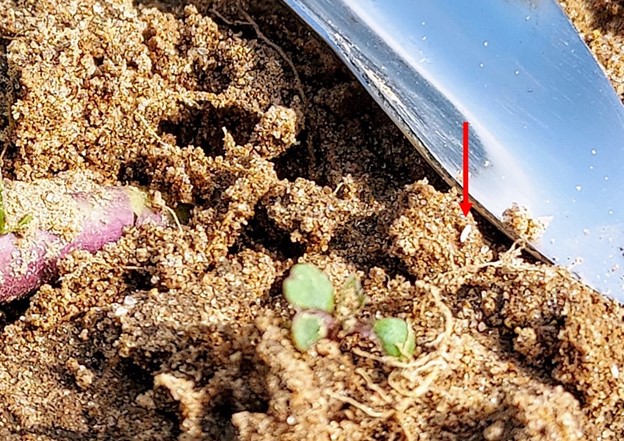
Brassica root crop growers could consider making Mustang Maxx (one-day PHI) applications to protect susceptible brassica root crops. If you cannot locate Mustang Maxx, Hero includes the same active ingredient plus bifenthrin. It has a longer PHI (21 days), and so is best used early on. Over the next few weeks, more and more flies will begin to emerge. Once peak approaches, growers can consider drenches of effective products including Exirel, Radiant or Entrust. Read more about this in “Controlling cabbage maggot in turnips with the Lorsban ban” from Michigan State University Extension.
Larger-scale cabbage growers can use tray drenches of Verimark – applied within 72 hours of transplanting – for cabbage maggot. This application can also provide early caterpillar and flea beetle control. If this is not possible, repeated applications of Mustang Maxx can also reduce damage, and could be initiated once plants have about two to three leaves. A new 2(ee) label describes this use.
Cabbage white butterflies-the mamas of imported cabbage worm-were out and about.
Cucurbits
Early summer squash and zucchini sowing was on the horizon for some West Central growers. Got Phytophthora issues? Applying Phytophthora fungicides through drip irrigation is an effective way to keep plants alive in plasticulture systems. Check out a full suite of Phytophthora factsheets.
Greens
Paperpot transplanters are in full force on small farms right now. The human-powered version is a nifty tool employed on several farms with a few acres in leafy greens. The same sort of technology scaled up to plant multi-row beds with tractors on large acre farms has not yet caught on in Michigan, though some have had the opportunity to trial a PlantTape machine. Here is one interesting idea from Australia that gangs up four Paperpot transplanters on a toolbar, sort of like ganging up Jang precision seeders for multi-row beds: Paper Pot Planter Australia: Introducing Curly's Planter. Be careful with steel in the field; in-row weed control can be more difficult with the tape connecting the plants.
Hoophouse greens coming out of late-winter/early-spring sowings will be stressed with the heat this week. Ventilation will be key, and irrigation could also aid in keeping them cool through evaporation from the soil surface.
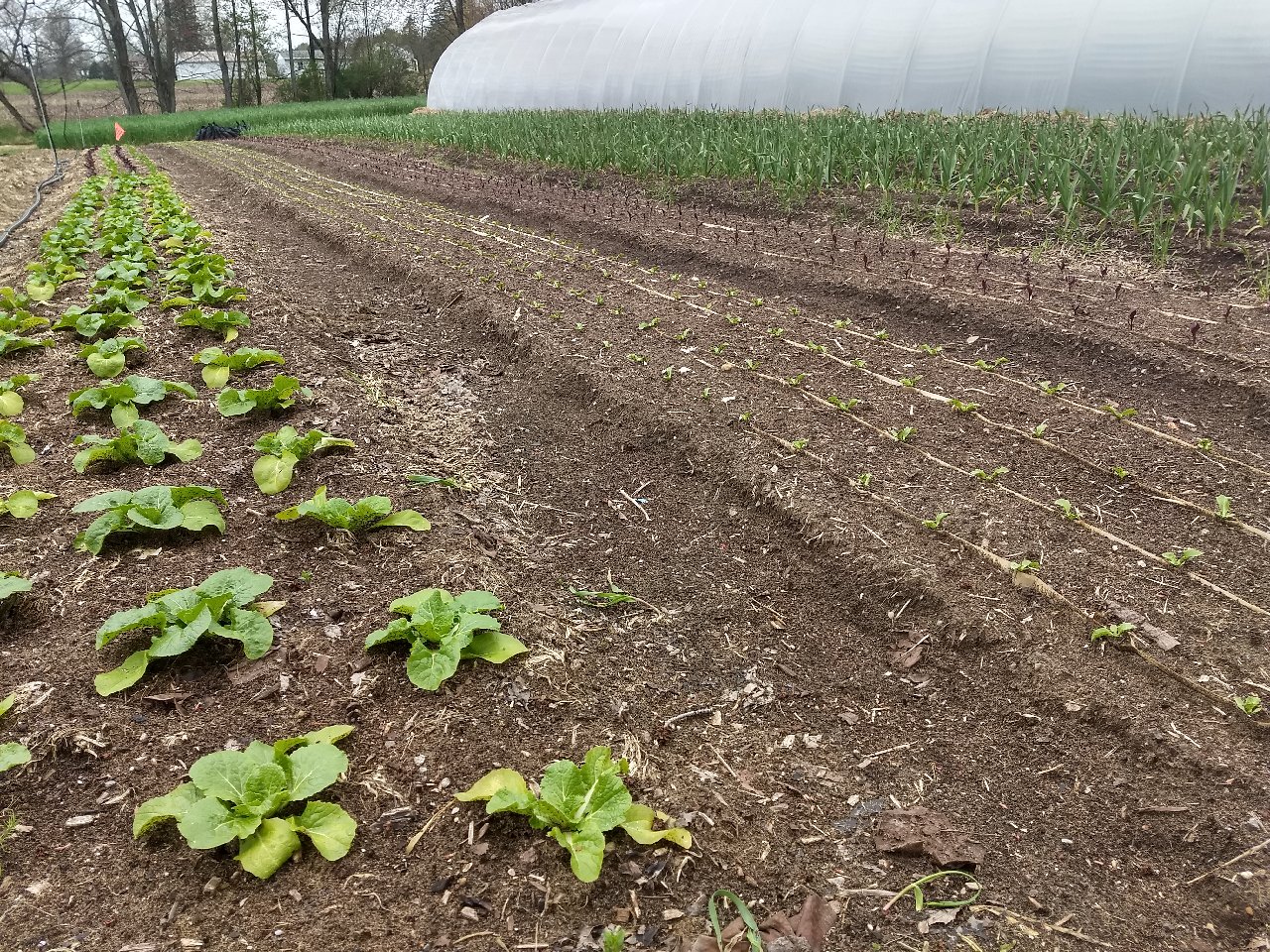
Onions, garlic
Leeks were being transplanted into 9-inch holes in Berrien County this week, and some garlic root rots were reported but a pathogen has not yet been identified. Young garlic is being pulled “green” for sale at some markets.

Onion sowing was wrapping up this week in west central Michigan. Onions that were out early were slow growing until the arrival of our recent warm weather. More advanced plantings were developing their first true leaf, while others were in the loop or flag stage. Remember that delaying barley kill too long can stunt the onions and, if the barley gets too big, reduce yields. Goaltender application is allowed when onions reach the first true leaf stage (one fully expanded true leaf with a second one coming).
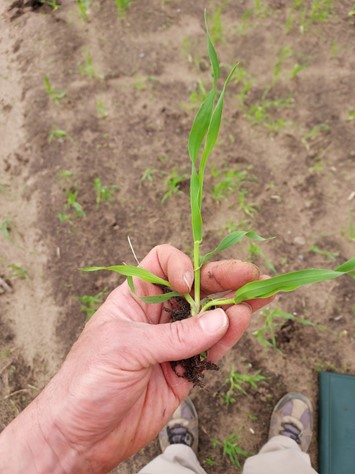
Rhubarb
Field rhubarb is getting close to harvest
Root crops
Parsnip harvest has been underway on several farms who overwinter that crop in the ground.
Stale seed bedding with flame weeders is a popular option on small vegetable farms, and is also used by larger-scale organic growers. The crop is seeded, and then sometime close to emergence a flame is passed over the surface to kill germinated weeds just before the main crop emerges. One must be careful with this procedure to avoid cooking the crop. One clever method to time this is to plant an indicator crop that emerges sooner than the main crop. For example, radishes make a good indicator for a main crop of beets, and beets make a good indicator for a main crop of carrots. Many things could work with practice, and a watch on the weather.
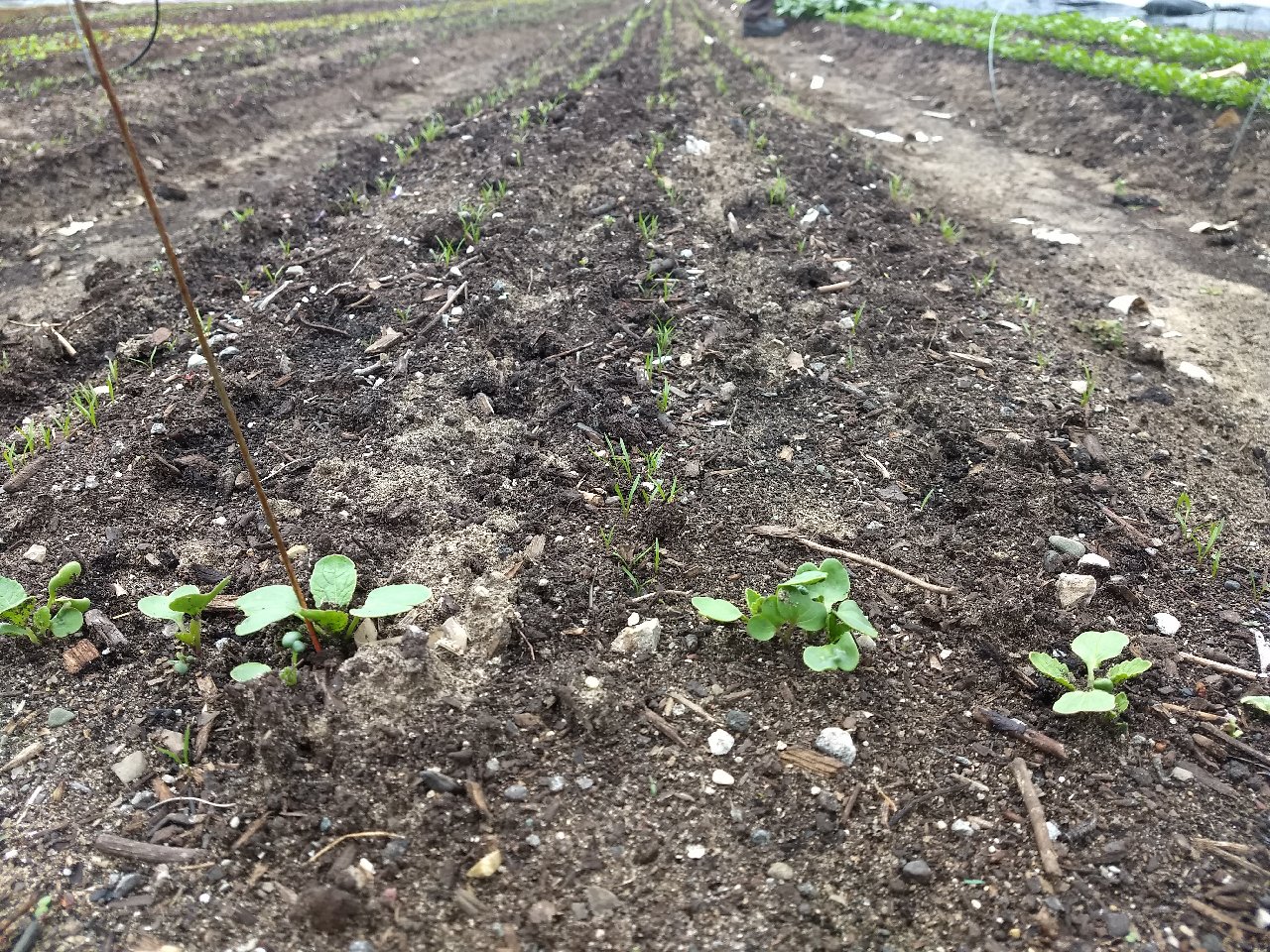
Ethan Tippett (tippet10@msu.edu), a student in Mary Hausbeck’s vegetable disease pathology lab, is on the lookout for root rots in root crops. Please reach out to him at any time this year if you see something affecting your various root crops at the root level. He will come and check it out for his project, but also let you know what he finds out.
Sweet corn
More plantings are going in. The rule of thumb for continual harvest is to seed the next set just after the previous seeding emerges. It gets tricky when mixing varieties with widely varying maturation dates, or if transplanting.
Strawberries
Flower buds are at the tight bud stage for much of the region, though some blossoms have opened. Chilling damage occurs at varying temperatures at different points in their development.
|
Stage of Development |
Critical Temperature (F) |
|
Tight Bud |
22.0 |
|
“Popcorn” (Slightly open bud) |
26.5 |
|
Open Blossom |
30.0 |
|
Fruit |
28.0 |
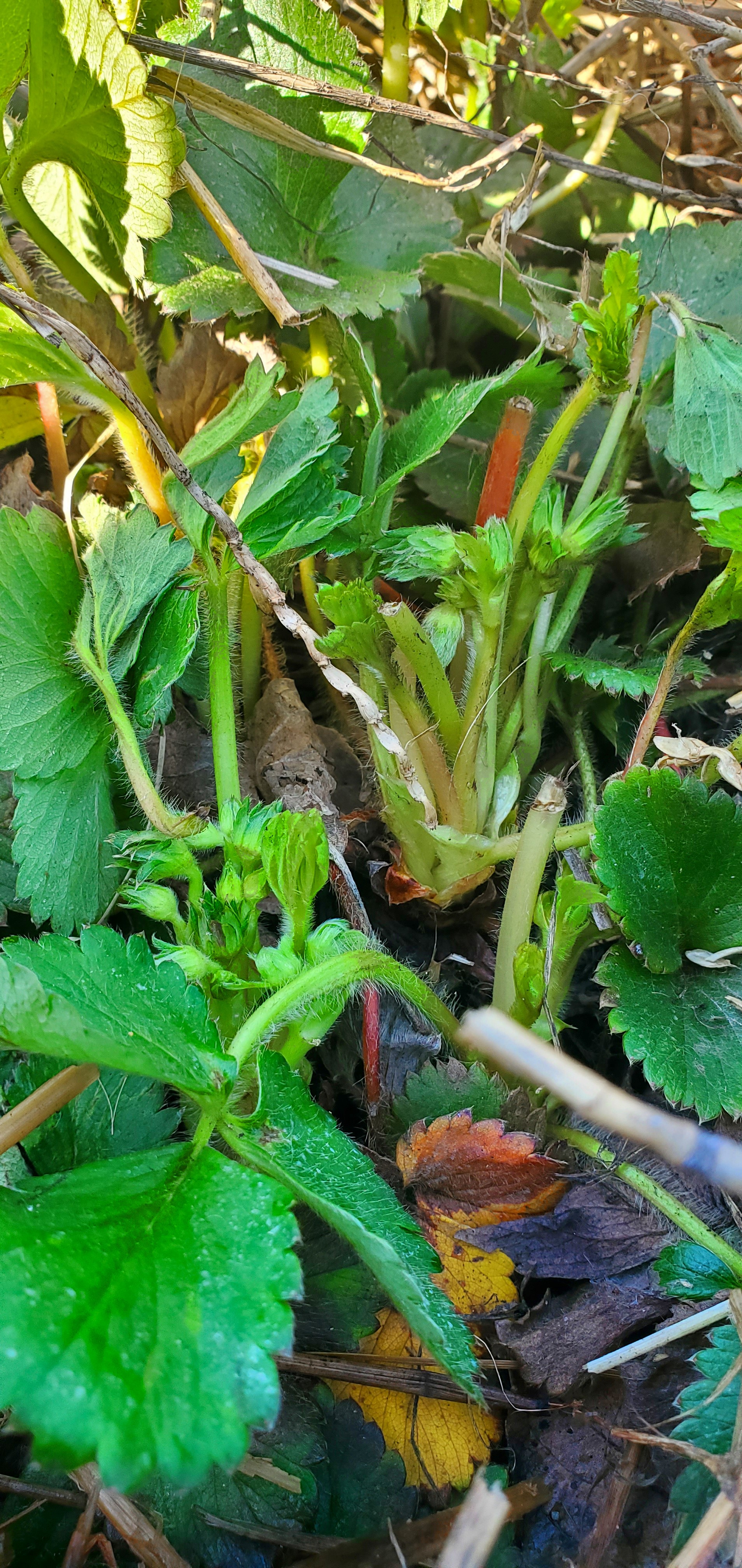
Fruiting vegetables
Hoophouse tomatoes will need keen ventilation this week to continue to set fruit. Tomatoes and peppers need nighttime temperatures between 55-70 F to produce pollen, and daytime temperatures should not exceed 90 F. Flowers will abort completely after 4 hours over 100 F.
Events
- May 12, 7-8 a.m. - Field Crops Virtual Breakfast: Head Scab in wheat (RUPS available)
- May 12, 6-8 p.m. - Michiana Fruit & Vegetable Tours: Early Season Production and Fertilization at Sweet Corn Charlie’s, 11003 CR 42, Millersburg, IN 46543. No registration required.
- May 16, 5:30-7 p.m. - Monday Night Southwest Michigan Fruit IPM Meeting (RUPS available)
- May 24, 7-8:30 p.m. - Taking Varroa Mite Seriously, Seven Ponds Nature Center, Dryden, MI
- May 25, 12-1 p.m. - MSU Hop-Chat bi-weekly webinar
- May 25, 1:30-2:30 p.m. - MSU Chestnut Chat bi-weekly webinar
- May 29, 7-9 a.m. - Field Crops Virtual Breakfast: Sidedressing corn (RUPS available)
This work is supported by the Crop Protection and Pest Management Program [grant no 2021-70006-35450] from the USDA National Institute of Food and Agriculture.



 Print
Print Email
Email

